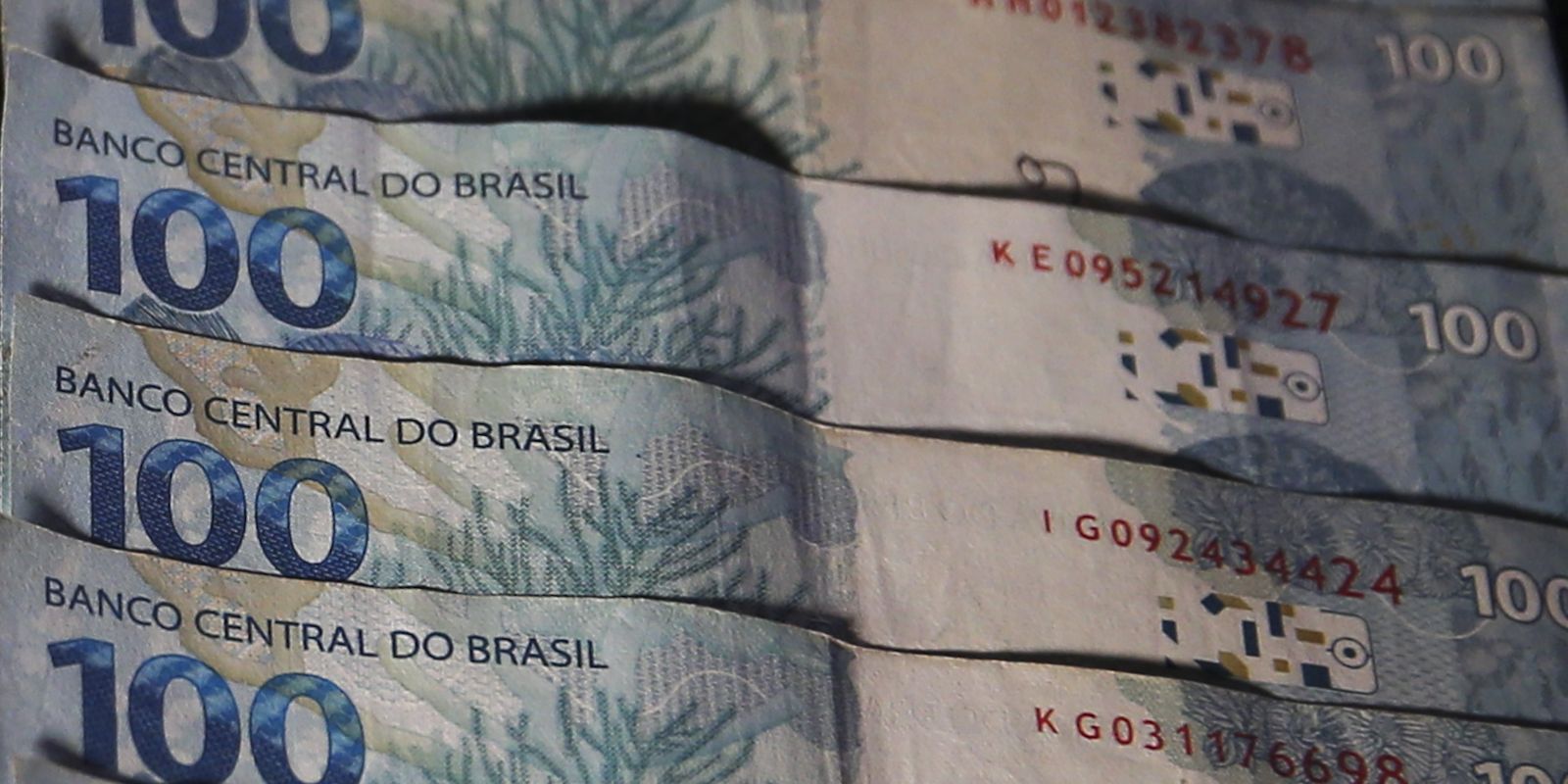Influenced by the high level of interest, the Federal Public Debt (DPF) rose in October and returned to above R$7 trillion, for the first time since August. According to figures released this Friday (29) by the National Treasury, the DPF went from R$6.948 trillion in September to R$7.073 trillion last month, an increase of 1.8%.
With the increase, the DPF returned to within the predicted band. According to the Annual Financing Plan (PAF), presented at the end of January and revised in October, the DPF stock should close in 2024 between R$7 trillion and R$7.4 trillion.
The internal Public Securities Debt (in securities) (DPMFi) rose 1.62%, rising from R$6.64 trillion in September to R$6.748 trillion in October. Last month, the Treasury issued R$42.5 billion more in bonds than it redeemed, mainly in bonds adjusted by the Selic Rate (the economy’s basic interest rate). However, the main factor of variation was the appropriation of R$64.84 billion in interest.
Through the appropriation of interest, the government recognizes, month by month, the correction of interest that accrues on bonds and incorporates the value into the stock of public debt. With the Selic Rate at 11.25% per year, the appropriation of interest puts pressure on government debt.
Last month, the Treasury issued R$109.8 billion in DPMFi bonds and redeemed R$67.29 billion. The majority, R$70.33 billion, occurred to meet the demand for securities adjusted by the Selic Rate. The issuance partially offset the high maturities of fixed-rate securities, those with interest rates defined at the time of issuance, which totaled R$63.84 billion.
The external Federal Public Debt (DPFe) rose 5.82%, rising from R$307.34 billion in September to R$325.22 billion last month. The increase was driven by the appreciation of the dollar, which rose 6.05% last month. The dollar began to soar in June, influenced by the delay in the start of the fall in interest rates in the United States and by the elections in the country.
Mattress
After falling in September, the public debt cushion – a financial reserve used in times of turbulence or a strong concentration of maturities – rose in October, rising from R$785 billion in September to R$822 billion last month.
Currently, the mattress covers 6.86 months of public debt maturities. Over the next 12 months, around R$1.28 trillion of DPF is expected to mature.
Composition
Due to the demand for securities linked to the Selic, the proportion of securities adjusted by basic interest rates rose from 45.33% in September to 45.91% in October. The PAF review predicts that the indicator will close 2024 between 44% and 47%, against a previous estimate of 40% to 44%. This type of paper attracts the interest of buyers because of the high level of the Selic Rate. The percentage could rise even further in the coming months due to the prospect of a rise in the economy’s basic interest rates.
Due to the high volume of maturities, typical of the first month of each quarter, the proportion of fixed-rate securities, those with a defined yield at the time of issuance, fell from 23.01% in September to 22.19% in October. The new version of the PAF indicates that it will close 2024 between 22% and 26%, against the previous target of 24% to 28%.
At the beginning of the year, the Treasury had launched more fixed-rate papers again. However, the return of market instability has compromised issuances, because these bonds are in lower demand at a time of economic instability and rising interest rates.
The share of inflation-adjusted bonds in the DPF increased slightly, from 27.25% to 27.31%. The revised PAF predicts that inflation-linked bonds will end the year between 25% and 29%, while the previous target was between 27% and 31%.
Composed of old domestic debt securities corrected in dollars and external debt, the weight of the exchange rate in public debt rose from 4.41% to 4.58%, mainly driven by the correction of interest rates on external debt. The public debt linked to the exchange rate is within the limits established by the PAF for the end of 2024, between 3% and 7%.
Term
The average term of the DPF fell from 4.18 to 4.16 years. The Treasury only provides the estimate in years, not months. This is the average interval in which the government takes to renew (refinance) public debt. Longer deadlines indicate greater investor confidence in the government’s ability to honor its commitments.
Holders
Financial institutions remain the main holders of internal Federal Public Debt, with a 28.6% share of the stock. Pension funds, with 23.7%, and investment funds, with 22.4%, appear next on the list of debt holders.
Even with the turbulence in the global financial market, the participation of non-residents (foreigners) rose from 10.5% in September to 10.7% in October. The percentage is at the highest level since December 2018. The other groups have a 14.6% share.
Through public debt, the government borrows money from investors to honor financial commitments. In exchange, it undertakes to return the resources after a few years, with some correction, which may follow the Selic rate (basic interest in the economy), inflation, the dollar or be prefixed (defined in advance).
* Article amended at 5:31 pm to correct information in the first paragraph. The Public Debt was above R$7 trillion, for the first time since August, and not June, as reported.

















